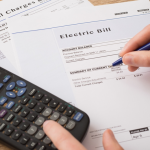When it comes to the end of your tenancy, you’ll want the whole process to go as smoothly as possible. Moving house can be stressful enough without having the added worry of not getting your deposit returned to you.
If you leave the property in as close a condition as it was when you moved in, you will be more likely to get your deposit back. Landlords want to see the property in the best condition possible when you return your keys.
End of tenancy disputes can be both challenging and stressful, but there are ways that you can avoid the stress.
In this article. We’ll discuss five things that you should do at the end of your tenancy to ensure you don’t lose your bond.
1. Review Your Tenancy Agreement
When you find out that you are going to be moving out of your property you should review your tenancy agreement.
Your tenancy agreement will give you information about the end of your tenancy and how this will be handled. It will also tell you about what will happen to your deposit and how this will be protected.
In many cases, landlords have a duty to protect your deposit to ensure it is still available to get returned to you when you move out. This may involve the landlord paying your deposit into a deposit protection scheme.
Your tenancy agreement will tell you all about where the deposit is held and the conditions surrounding its return.
Your tenancy agreement will also let you know how much notice you will need to give if you intend to move out. It should also inform you about the conditions under which you may be served your notice too.
2. Review the Inventory
When you moved into your property, your landlord or letting agents will have created an inventory of everything that is in the property as well as the condition of the property. It is essential that you revisit that document before you move out.
Pay close attention to the condition of the property in the photos. Some wear and tear will be expected, however, if there has been an abnormal amount, this may affect your bond.
Fair wear-and-tear is legally defined as: “Reasonable use of the premises by the tenant and the ordinary operation of natural forces.”
Several factors should be considered when it comes to determining fair wear-and-tear. These include:
- The natural expected lifespan of the item in question
- The age of the item and the length of the tenancy
- The brand of the item and the manufacturer’s specifications
- The condition of the item when you moved in
If your home was rented to you furnished, make sure that all of the items of furniture are still in their original condition. Your inventory should have photos that you can use for comparison.
An adjudicator will consider all of the relevant factors and make comparisons against the inventory. If there has been any change to the condition of any of the items in the home, the cost of repair or replacement will be split between the tenant and the landlord.
The portion that is considered to be wear-and-tear will not be paid by the tenant.
3. Hire Professional Cleaners
While you can clean your property yourself, if you want to ensure the highest standard of cleaning, you may want to hire a professional cleaning company to come and carry out the work for you.
A professional cleaner will be able to do a much more thorough job of cleaning your property than you might be able to do.
Many cleaners even specialize in end of tenancy cleaning and will be able to clean all areas of the property to the highest possible standard.
Professional cleaners will pay particular attention to areas that are likely to have the greatest build-up of dirt. This will include showers, ovens, and hobs.
A professional cleaner will also use carpet cleaning equipment to ensure your carpet is as clean as possible.
4. Take Photos of How Your Property Was When You Left
Although there are measures in place to protect tenant’s rights and their deposit, some landlords may try and take advantage of unsuspecting tenants. You must take photos of your home so that you have evidence of the condition the property was left in.
If there is a dispute over the condition of anything at end of your tenancy, you’ll be able to demonstrate with evidence how the property was left.
5. Make Sure Your Rent Is up-to-Date
As well as making deductions from your bond for any cleaning or damage to the property, your landlord may also deduct any unpaid rent from your deposit.
Make sure that when you hand in the notice on your tenancy, that you check that you are up-to-date on your rent. With a deposit often being the equivalent of a month’s worth of rent, you can’t afford to be behind on your rent if you want your bond returning to you.
6. Be Prepared to Challenge Your Landlord
If you have had any deductions taken from your bond, and your landlord has not given you a reason why then you should challenge them on this.
Ask your landlord for more information about the money that they are deducting. If they say that they have taken money for decorating, ask to see a quote from the decorator.
If you are still in dispute with your landlord, get in touch with the organization that was protecting your deposit.
Make an End of Tenancy Checklist
Make an end of tenancy checklist using the points from this article and you’ll ensure that you will be able to leave your rented property with your bond. Take care to make sure that the house is as clean as possible and compare your inventory with the current condition.
For more great articles, please check out the rest of the site.



